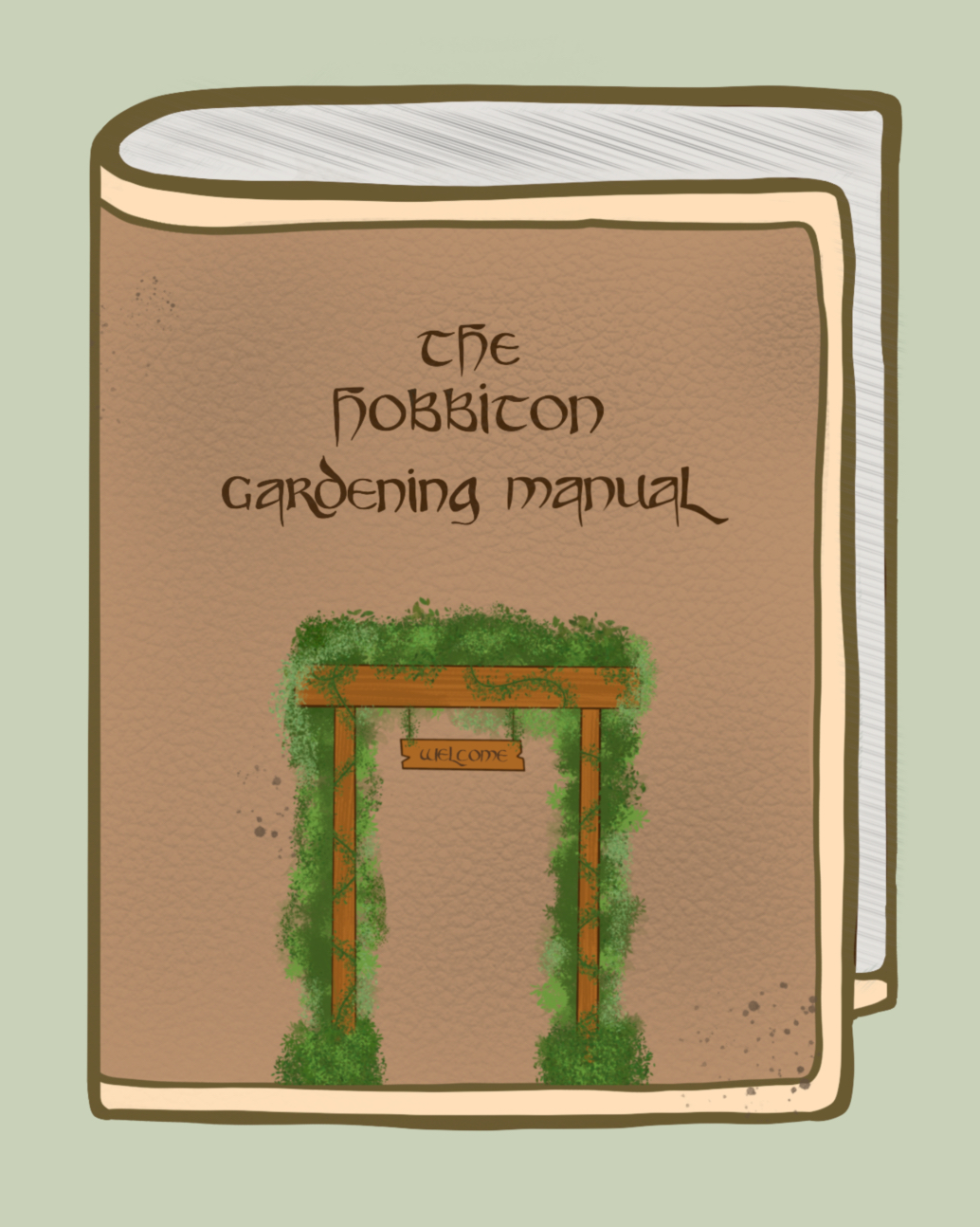Tips & Tricks from generations of Hobbit Gardeners
__________________________________________________________
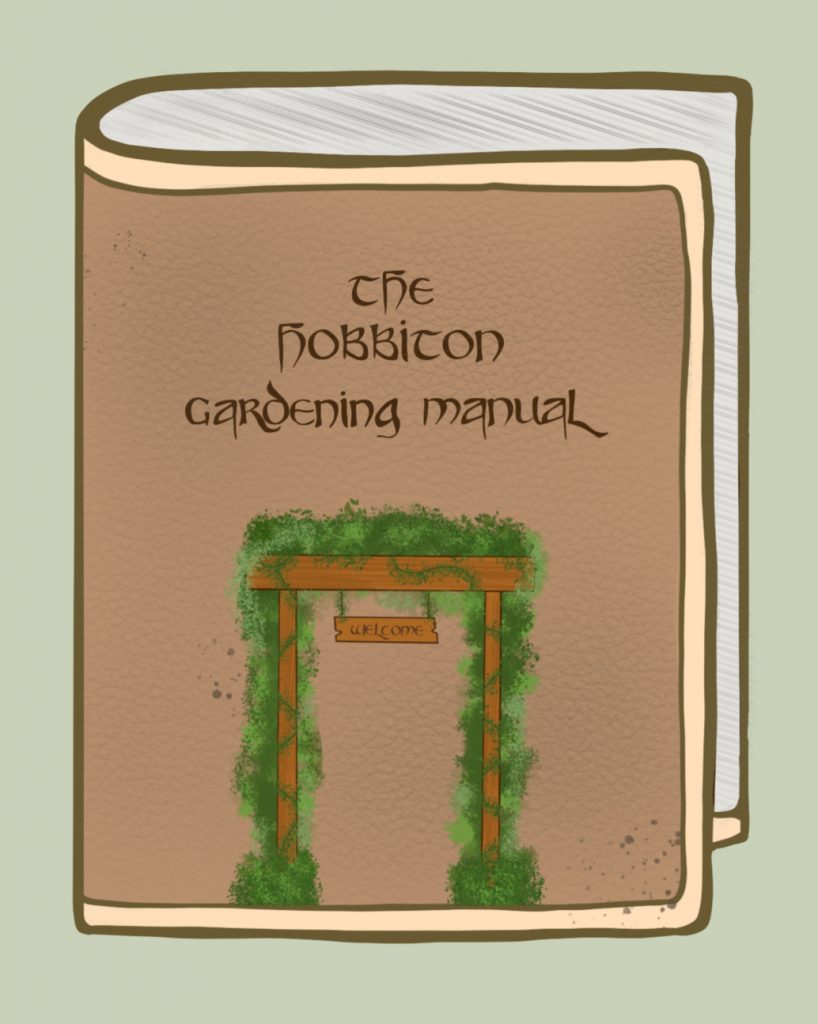
The cover of the Hobbiton Gardening Manual features a rustic, charming illustration of a garden entrance. The well-worn leather book is imprinted from the many generations of hands that have held it.
The Hobbiton Gardening Manual
Author: Unknown, possibly compiled by various Hobbit gardeners
Type of Object: Handwritten journal, containing gardening tips and tricks
Date of Manufacture: Circa 1300 -1400 of the Third Age
Place of Manufacture: Hobbiton, The Shire
Artifact Number: MH-552
Owner: The Mathom House, Hobbiton
Status: Donated to the permanent collection by the Baggins Family in 1420, following the passing of Bilbo Baggins
__________________________________________________________
The Hobbiton Gardening Manual is a well-maintained example of the Shire’s deep agricultural traditions. Though the exact author is unknown, it is likely a skilled Hobbit gardener or group of gardeners. This manual was once a go-to resource for those seeking simple advice on how to tend to a garden in the Shire. It offers practical instructions for everything from growing fruits and vegetables to cultivating pipeweed. Over time, as newer farming techniques emerged, Hobbits started moving away from traditional methods, the manual was put away and eventually donated to the Mathom House by Bilbo Baggins. Today, it serves as a reminder of the Shire’s connection to nature and the importance of these customs in shaping Hobbit life.
__________________________________________________________
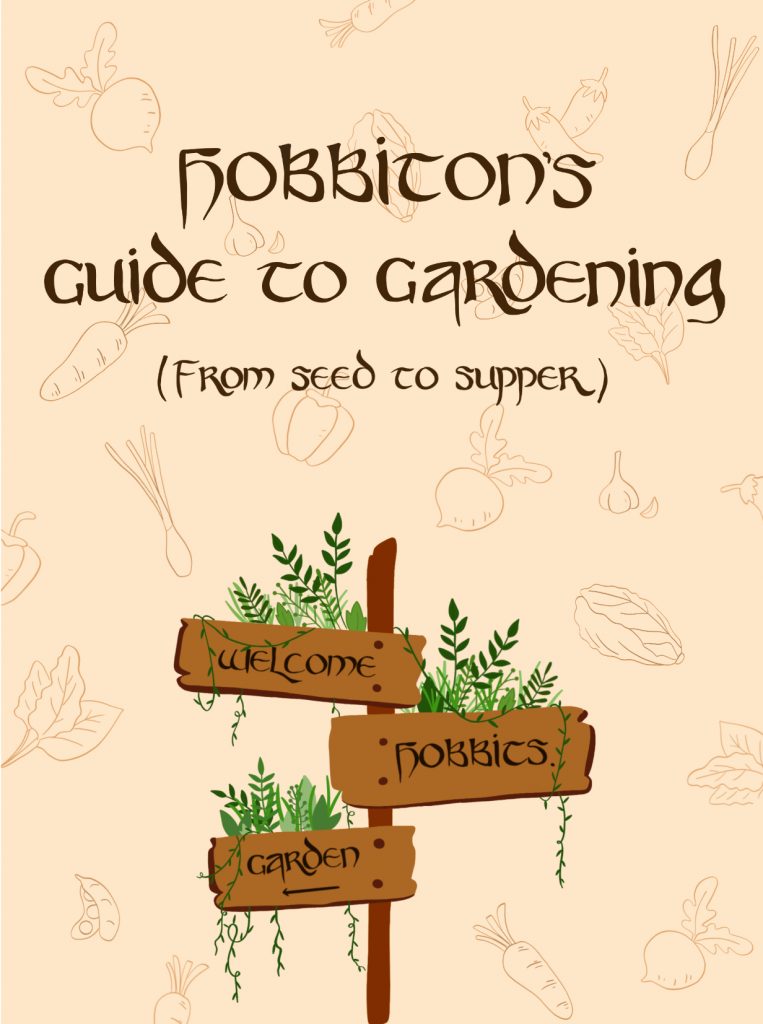
__________________________________________________________
The Hobbiton Gardening Manual is an important artifact that provides a unique look into some agricultural traditions and cultural values of the Shire. This gardening manual was likely created by a group of gardeners from Hobbiton, and originally used as a guide for Hobbits seeking to learn to grow and tend their gardens. In essence, this guide provides some simple key tips for growing and caring for a variety of crops and is a practical tool for every Hobbit gardener. From flowers and vegetables to herbs and the beloved pipeweed that Hobbiton is known for, this guide outlines everything a Hobbit needs to grow a prosperous garden. Beyond its practical uses, the gardening manual also signifies the foundational significance of gardening in Hobbiton’s culture. Hobbits take great pride in growing food to help nourish and sustain their communities, as gardening is an essential part of the Hobbit identity. The gardening manual offers practical guidance for preserving the beauty and fertility of the land, which reflects the values and farming lifestyle of Hobbiton. It embodies the Shire’s values of self-sufficiency, simplicity, and respect for nature, and highlights the strong bond Hobbits have with the land, emphasizing their commitment to sustainability and conservation, and their love for the land that supports and nourishes them. The use of the Hobbiton Gardening Manual was likely widespread among Hobbit households, particularly in more rural areas where prosperous harvests were crucial for survival. Much much of the Shire’s economy is dependent on its farming, relying on its rich, fertile soil to produce a variety of crops, from fruits and vegetables, to flowers and the beloved pipeweed. The Gardening Manual touches on a variety of practical topics, from essential gardening tools, to seasonal tips, and when to plant certain crops, aimed at helping Hobbits maintain their gardens and foster plentiful crops throughout the seasons. Though these tips are quite effective, they are also a part of deeply rooted Hobbit traditions that have been passed down from generation to generation, ensuring the preservation of gardening practices and knowledge over time. Generally Hobbits tend to be simple, rural, conservative folk, reluctant to embrace change. As such, the Gardening Manual would have played a key role in preserving the old ways of gardening, while maintaining the values of sustainability, patience and hard work. The Hobbiton gardening manual also holds deep cultural significance beyond its practical use, as gardens serve as places for both work and leisure, where Hobbits not only tend to their crops but also socialize and relax. In the Shire, gardening is viewed as a type of art, where attention is not only on the quality of the crops but also the appearance and design of the gardens themselves. Hobbits take great pride in creating lively, well kept gardens, reflecting their deep appreciation for both beauty and nature. The Hobbiton Gardening Manual is not only a practical guide for gardening, but also an expression of the Hobbit Way of life, one that values beauty, simplicity, heritage and nature. As later generations of Hobbits started experimenting with different ways of farming, the Hobbiton Gardening Manual may have become less useful and been set aside. In keeping with the traditions of the Shire’s Mathom House, a place for displaying items of historical or sentimental value, the Hobbiton Gardening Manual earned a place of honor as a cherished piece of Hobbit history. Now, it stands as a treasured artifact and a lasting reminder of the charm, beauty and simplicity of Hobbit gardening, and their deep rooted connection with the land.
__________________________________________________________
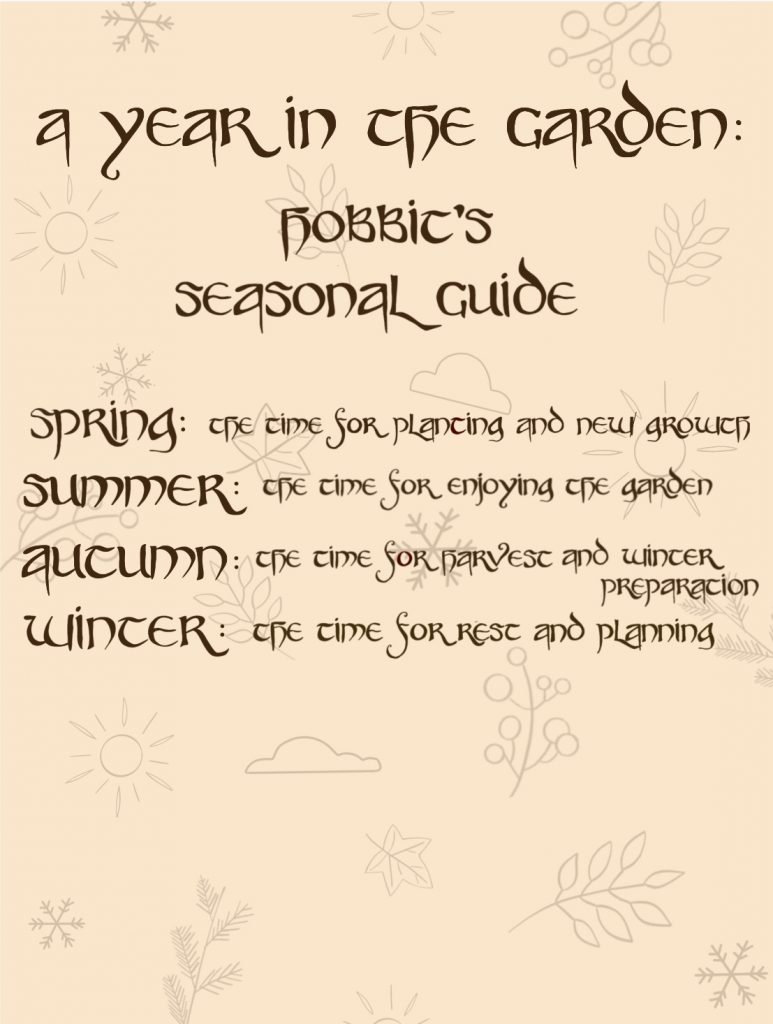
The Seasonal guide gives learners a simple idea about what to expect in each season for farming, emphasizing key activities and planting times throughout the year.
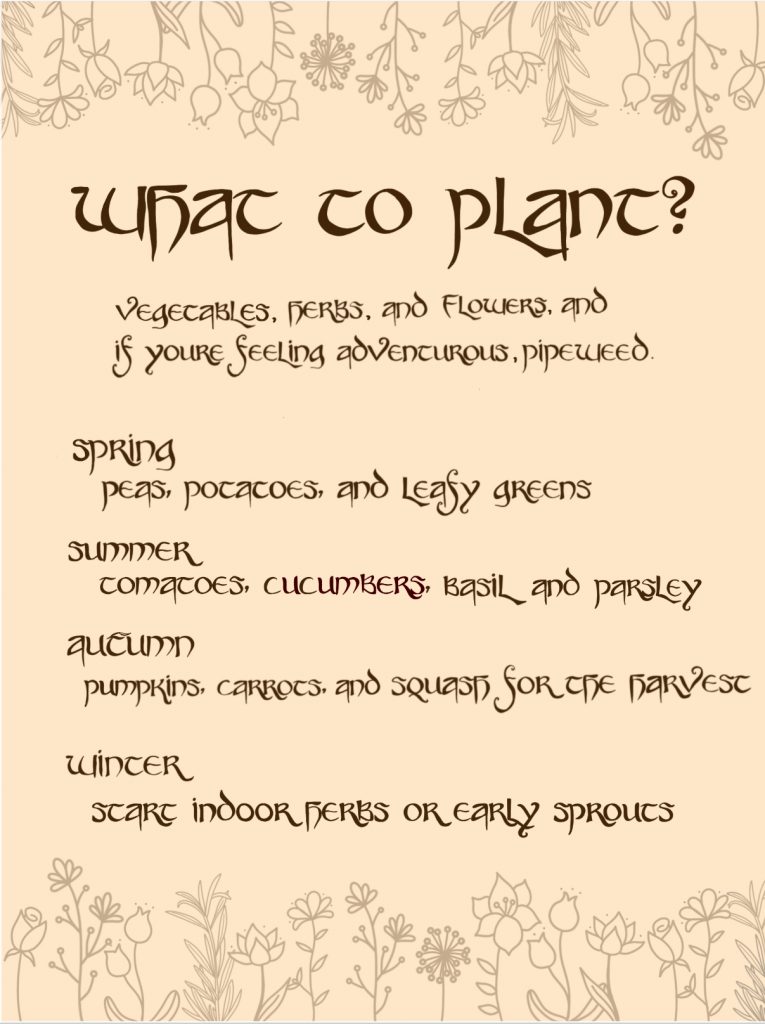
The page serves as a guide for the best plants to grow during each season, helping gardeners choose the right crops for the best harvest.
Copyright Information:
Photograph, ‘Hobbiton Gardening Manual.’ Photographer: Bailey P. Medium: Digitally on Procreate. Date created: 24th November, 2024. License: May not be reproduced without permission of this page’s creator.
